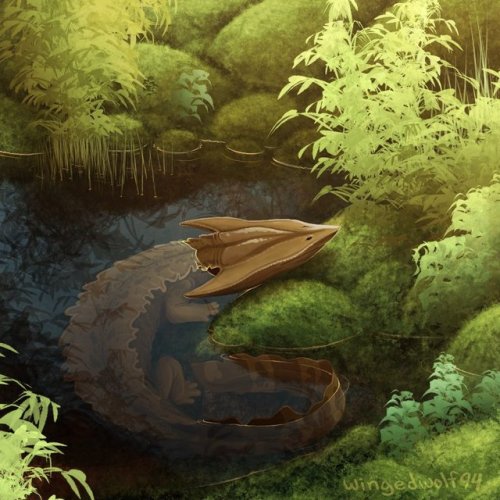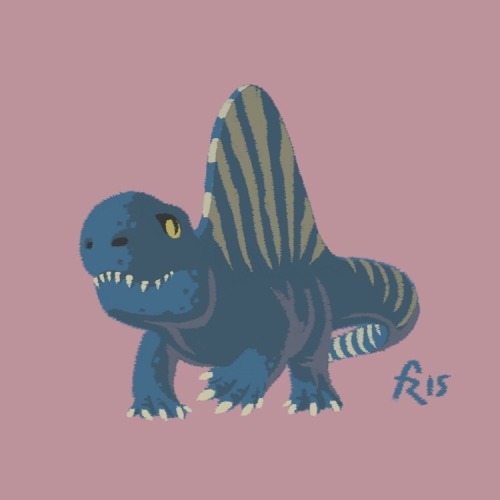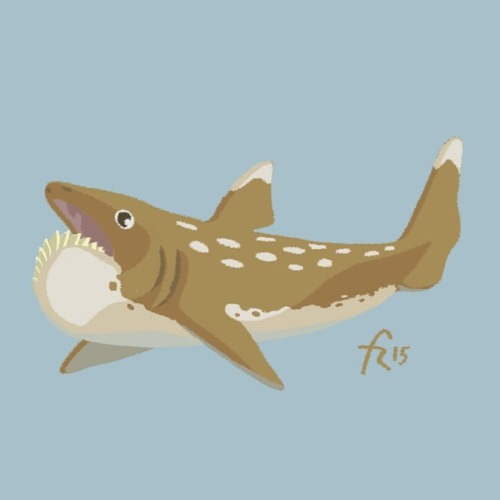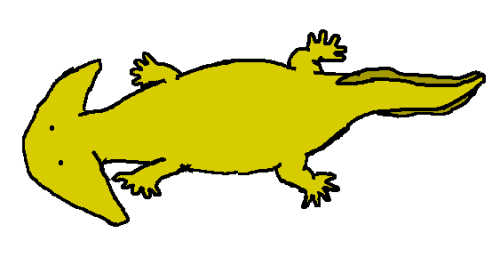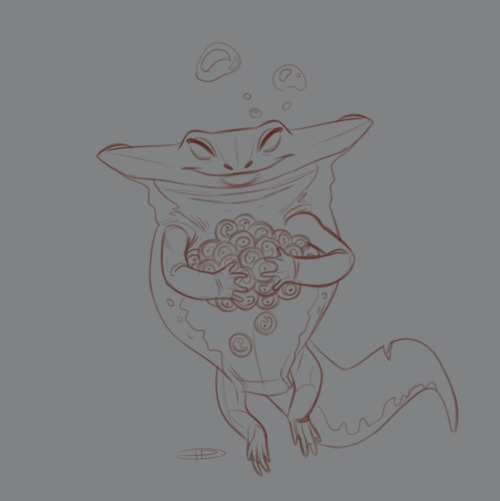#diplocaulus
The water is like a blanket in the morning; it comforts and soothes, presses slight weight on the body, and envelops in a way that brings a primal comfort. Had Diplocaulus the memories, it might liken the pond to the warm fluids in which it swam within the jelly-egg from which it once hatched.
Post link

LAST CHANCE to adopt a huggable Permian fossil! https://paleopals.square.site/
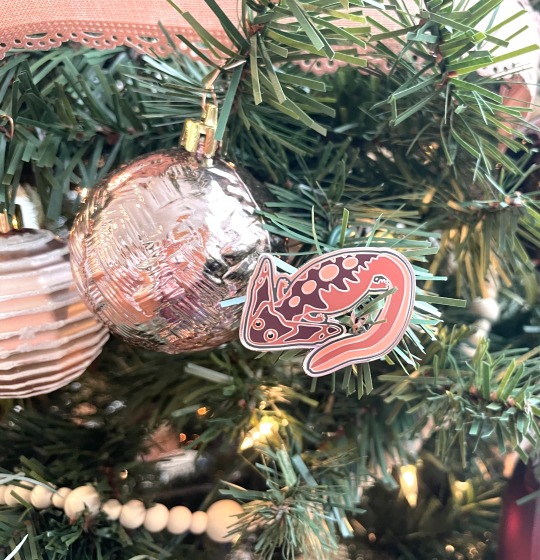
Get your prehistoric amphibian pins here: https://paleopals.square.site/#EyzKjP

Digging for gifts for your science minded friend? Look no further than the cutest fossil from Permian! https://paleopals.square.site/

Adopt your own Permian friends at: https://paleopals.square.site/#EyzKjP


Two background studies I did off of random stock images, both all in one layer. First is cretaceous (Maastrichtian), second is devonian!
[ID two digitally painted images, the first is of a rocky shore with a large cliff surrounded by foliage in the background. The silhouette of 3 birds can be seen in the background and in the foreground, 3-toed dinosaur footprints line the sand and amongst the rocks on the beach is a coiled ammonite shell.
The second image is a grey and green swamp with many large-based trees coming out of still, algae-covered water. It is misty as the trees fade out into the background, and in the foreground a small orange-brown diplocaulus (a salamander-like prehistoric amphibian with a boomerang-shaprd head) swims with its back and head visible. END]
Diplocaulus- Early-Late Permian (~270-245 ma*)
Our second Permian animal, and our first definite-absolute amphibian, is Diplocaulus, a 3-foot long predator from Texas, and maybe Morocco. It’s… super weird and I feel very strongly about it.
For the most part, Diplocauluslooked and acted pretty much like a Giant Salamander. It had a sprawling, four-legged gait. It spent most of its time in the water hunting fish. It lived and reproduced in burrows near lakes or other bodies of fresh water. It weighed about 5-10 pounds, as much as a cat.
Anyway, let’s talk about that head. It’s shaped like a boomerang because… It just happened like that? The problem with extinct animals is that the farther back in the fossil record you go, the less information we have on them. But no, everything under natural selection happens for a reason, even things as ridiculous as this. Maybe it served as a hydrofoil, letting it swim faster. Another theory is that it was shaped so awkwardly so nothing could swallow it. I like that one. It was definitely hard to lug around on land, though. They can’t all be winners.
We also have fossil evidence that Dimetrodonwas a frequent predator of this soggy boy. One set of remains looks like a crime scene, where a Dimetrodondug up a burrow and ate some young Diplocaulus. This maybe says that Diplocaulustook care of its young beyond squeezing them out and walking away, but maybe it’s best not to read too much into it. Maybe they all just holed up in the ground together during the dry season.
Diplocaulusis unique within its group, the Lepospondyls. Lepospondyls were one of the oldest groups of amphibians, and were characterized by simple backbones, which were basically just the primitive notochord wrapped in bone. Diplocaulusis one of the largest in that class, as well as the youngest, living well into the late Permian. It’s also the only one we know of that looked like a banana. The placing of Lepospondyli is a little up in the air. We’re not sure if they’re the early ancestors of modern amphibians, or if they’re directly descended from the earliest land vertebrates, or what.
For some reason, it’s been the subject of a number of hoaxes claiming it’s still alive. Seriously, google ‘diplocaulus real’ and you’ll find so many pictures and videos of people trying to say they saw one. I don’t know why this keeps happening to Diplocaulus, of all animals, but it does. Maybe because it’s small and easy to fake? It’s also appeared in pop culture a few times, which is kinda strange for something of this sort. It’s in ARK: Survival Evolved (Basically in name only. It’s REALLY big and REALLY angry-looking), as well as a few Jurassic Park games (again in name only). It also shows up briefly in the anime Neon Genesis Evangelion, which I only mention because I like NGE. It’s only there for like, a second in the last episode. I can’t offer any further context, because it’s the last episode of Neon Genesis Evangelion.
Diplocaulushas always had a special place in my heart. When I was a kid, my grandparents gave me a bunch of books about Dinosaurs that belonged to my dad when he was young. One of them was titled Prehistoric Monsters did the Strangest Things. It’s from 1974, and the cover literally has a bunch of sauropods standing in a lake munching on seaweed, so that should tell you everything you need to know about the accuracy of the book. I still ate that shit up. Diplocaulusis the animal they use to talk about the transition from sea to land (on this spread right here). I stole the color scheme, because in my head it’s always been yellow.
*There are no exact dates for Diplocaulus’ span of existence, so I snowballed it from the beginning of the Permian to a bit before the Great Dying. If I’m wrong, and there are dates for it, please let me know!
Post link
I just wanted to announce that my diplocaulus picture I posted a while back has reached 10′000 notes a personal milestone for me. Also thanks to all your likes and reblogs she was able to find a quiet place to lay her eggs congratulations.
Post link

